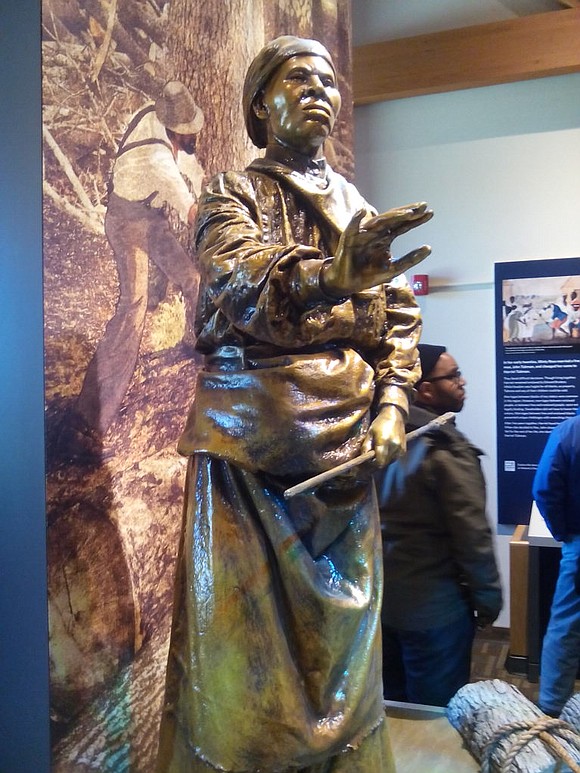Hardy visitors who braved the cold to attend the grand opening weekend of the Harriet Tubman Underground Railroad State Park and Visitor Center got a taste of the bleak winds and open country that Tubman maneuvered when she led family and friends from slavery to freedom more than 150 years ago.
The atmosphere inside was anything but bleak. The state park that will now anchor Tubman’s contribution to American history was alive and brimming with energy, curiosity and reverence for the abolitionist, Union Army spy, and women’s’ rights advocate who continues to inspire people around the world, almost 200 years after her birth in Dorchester County.
Randolph Rowel, chair of the Behavioral Health Sciences Department at Morgan State University, made the drive to Church Creek with his brother and family. Rowel recently discovered that Tubman is an ancestor.
“I am still learning the entire story. We have discovered we are related to Rev. Samuel Green, who was related to Harriet Tubman,” said Rowel. Green was a minister in the AME Church in Dorchester County where Tubman was born.
Marvin Winans, keynote speaker at a breakfast in honor of Tubman said, “We cannot hide ourselves in our own comfort and not recognize and tell the stories of how we got here.
“What I noticed about Harriet Tubman is that once she was free, she could have kicked back and said ‘I made it,’” Winans said, recalling Tubman’s repeated trips back into the South to rescue more than 70 persons and give instructions to more than 100 others.
“How free do you think you are when someone who looks like you is not free?” Winans asked the audience.
“Harriet Tubman is probably the most well-known figure of the Underground Railroad movement. It is exciting to be here and to connect people with learning more about Harriet Tubman, and the Underground
Railroad,” said De’anda Johnson, regional manager of the National Park Service’s Network to Freedom
Project.
“You can’t understand one without the other,” she said.
Tony Cohen, a historian and founder of the Menare Foundation for the Preservation of the Underground Railroad in Germantown, Md., displayed artifacts from the era of slavery for hundreds who came to learn more about the “peculiar instruction” and Tubman’s role in creating pathways to freedom. He displayed
and discussed the relevance of the infamous two-pound weight that struck Tubman in the head inadvertently and caused her to have seizures for the rest of her life.
“During her seizures, she said that she could see the path she needed to take to freedom,” said Cohen describing Tubman’s tenacity and determination to fulfill her mission to lead others out of slavery.
“A more vibrant story has emerged in the last few years,” Cohen said, informing the audience of private artifacts and university records that have recently been uncovered providing more details about the Underground Railroad.
The 17-acre park features an exhibit hall, gift shop, legacy garden and research library. The park is open seven days a week, free of charge. The Visitor Center facility, a joint project of the National Park Service and the Maryland State Park, is staffed from 9 a.m. to 5 p.m. A driving guide to Underground Railroad sites along the Eastern Shore of Maryland is available. The Harriet Tubman Underground Railroad State Park
and Visitors Center is located at 4086 Golden Hill Road, Church Creek, Maryland 21622. The telephone number:410-221-2290 E.R. Shipp contributed to this story.
